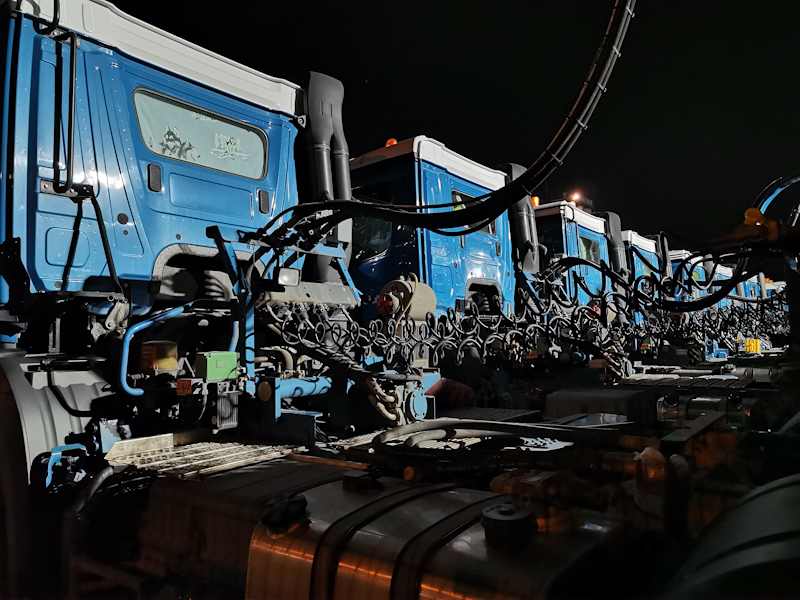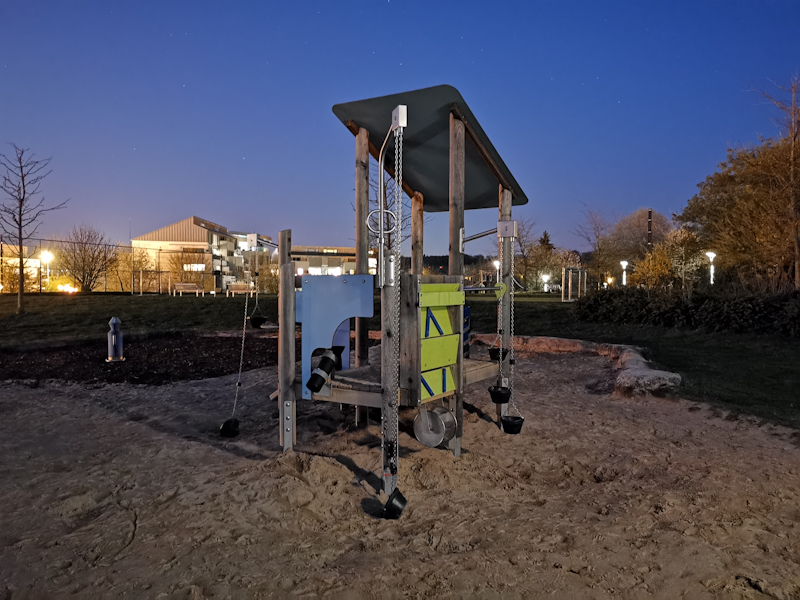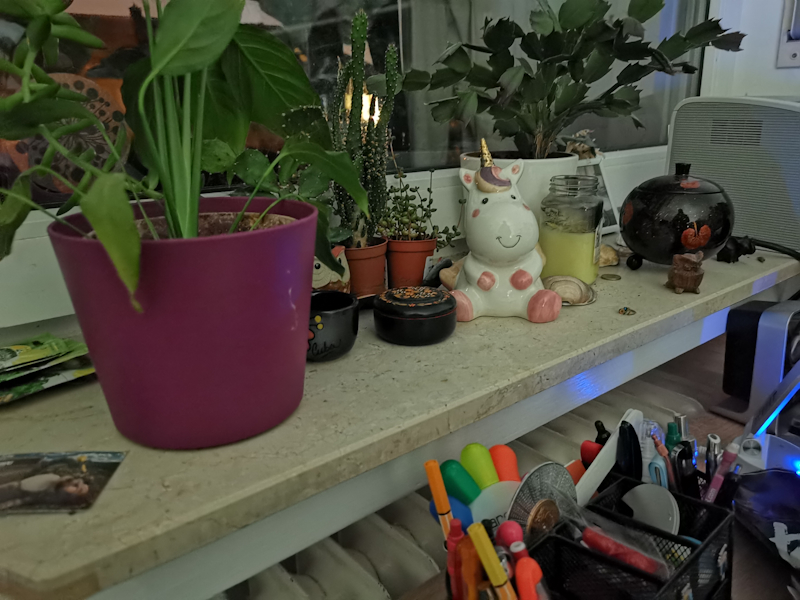The Huawei P30 & P30 Pro Reviews: Photography Enhanced
by Andrei Frumusanu on April 18, 2019 9:00 AM EST- Posted in
- Mobile
- Smartphones
- Huawei
- P30
- P30 Pro
Camera - Low Light Evaluation
Low-light photography is where Huawei’s strengths lie. Starting with the P20 the company was a pioneer in terms of computational photography, not only was the company able to improve low-light capture on smartphones with “regular” camera sensors, it also marked the start of customised camera sensor hardware that was able to achieve much higher ISO sensitivity than any other phone camera on the market.
Huawei’s rationale for adopting the RYYB sensor was in order to improve the low-light capabilities of the phone, promising 30% increased light capture. The P30 Pro in particular we’re expecting some massive low-light capture improvements, not only due to the new sensor but also thanks to the wider aperture as well as the integration of OIS in the sensor – something we haven’t seen in Huawei devices in several years.

[ P30 Pro ] - [ P30 ]
[ P20 Pro ] - [ P20 ] - [ Mate 20 Pro ]
[ S10+ (S) ] - [ S10+ (E) ] - [ S9+ (S) ]
[ G8 ] - [ G7 ] - [ V40 ]
[ View20 ] - [ OnePlus 6T ] - [ Pixel 3 ] - [ iPhone XS ]
As a note, shooting in 40MP mode in low light is pretty much a futile exercise, as the sensor just isn’t able to capture enough light without help of pixel binning down to 10MP.
Huawei had already a lead in low-light capture with its previous devices, and the only viable competition was the new Pixel’s Night Sight mode. With the P30s, Huawei now extends this lead. While not exactly reaching the level of detail on the Pixel 3’s Night Sight mode, the P30s both show very large improvements over their 40MP predecessors all while being leagues ahead of other traditional camera sensors.
It’s to be noted the Pixel 3’s Night mode was way off in terms of colour temperature, and the Huawei phones had a more correct representation of the orange illumination of sodium street lamps.
At certain brightness levels such as in this scene, Night mode on the Huawei phones can have a detrimental effect and results in blurred details, even though it produces a brighter image.
Both wide angle modules struggle in low-light, however Night mode can help out a lot. Again between the four wide angle shots between the P30 Pro and P30 we’re getting very different results, with the smaller P30 producing brighter results for some reason.

[ P30 Pro ] - [ P30 ]
[ P20 Pro ] - [ P20 ] - [ Mate 20 Pro ]
[ S10+ (S) ] - [ S10+ (E) ] - [ S9+ (S) ]
[ G8 ] - [ G7 ] - [ V40 ]
[ View20 ] - [ OnePlus 6T ] - [ Pixel 3 ] - [ iPhone XS ]
In this parking lot, again in regular shooting mode the P30s are ahead of the competition, with the only real contender being Google Night mode. Switching on the P30’s we see better exposure and shadows, although Google continues to retain a detail lead.
On the wide-angle camera, Huawei’s Night mode remains unchallenged. LG’s G8 comes near in terms of exposure, however it lacks details and is very noisy. Samsung’s new cameras are lagging far behind in this aspect.

[ P30 Pro ] - [ P30 ] - [ P20 Pro ] - [ P20 ]
[ Mate 20 Pro ] - [ S10+ (S) ] - [ S10+ (E) ] - [ S9+ (S) ]
[ G8 ] - [ G7 ] - [ V40 ] - [ View20 ]
[ OnePlus 6T ] - [ Pixel 3 ] - [ iPhone XS ]
This shot is quite challenging due to the high dynamic range between the illuminated truck cabins and the dark lower parts of the image. In the default mode, both P30s produced too dark images with not sufficient dynamic range, however on the P30 Pro the phone captures an evident HDR processed picture. I didn’t do anything special between takes, and this is something I’ve experienced in the past with Huawei devices. Unfortunately the phone has like a dozen capture modes which get triggered depending by scene, and one has little control over it and the result can only be determined by the resulting EXIF information in the image.
When in Night mode, the P30’s produce better shadows than the Pixel, however the latter continues to have an advantage in terms of detail. The Pixel is also a tad too saturated with the blue of the trucks, while the Huawei phones are too undersaturated.
Camera - Extreme Low-Light Evaluation
Moving on to extreme low-light conditions, these are scenarios we traditionally didn’t expect smartphones cameras to be effective at all. Most phones here will produce a dark image and are at their limit in terms of light capture. To be able to perform here, you need help of specialised sensors or sneaky computational photography.

[ P30 Pro ] - [ P30 ] - [ P20 Pro ] - [ P20 ]
[ Mate 20 Pro ] - [ S10+ (S) ] - [ S10+ (E) ] - [ S9+ (S) ]
[ G8 ] - [ G7 ] - [ V40 ] - [ View20 ]
[ OnePlus 6T ] - [ Pixel 3 ] - [ iPhone XS ]
In our playground shot in the night, the P30 Pro pulls in some incredible amount of light. The auto shot comes in at ISO25600, however due to the noise reduction you’re hard to notice any noise at all.
The smaller P30 had issues in terms of focusing correctly, and thus it resulted in a blurry shot.
Switching on Night mode, the P30 Pro is able to capture some outstanding results far ahead of any other device. The inclusion of OIS on the P30 Pro really augments the Night mode, and while in past devices we saw more blurred details in this mode, on the P30 Pro things actually get a lot sharper.
The Pixel 3’s Night mode can’t keep up here as even if it’s algorithmically superior, the sensor just isn’t able to capture enough input data.
Comparing the P30 Pro to say the iPhone XS really showcases the massive differences that we’re currently seeing in the competitive landscape, and the differences are absurd.

[ P30 Pro ] - [ P30 ] - [ P20 Pro ] - [ P20 ]
[ Mate 20 Pro ] - [ S10+ (S) ] - [ S10+ (E) ] - [ S9+ (S) ]
[ G8 ] - [ G7 ] - [ V40 ] - [ View20 ]
[ OnePlus 6T ] - [ Pixel 3 ] - [ iPhone XS ]
In this last in-door shot, the absurdity continues as the P30s are just in a different league. Again between the P30 Pro and the P30 we see the former take advantage of OIS and a resulting sharper picture.
Both phones in the auto mode area already ahead of the pack in terms of capture ability, but turning on the Night mode further widens the gap, achieving even more detail. I was actually aghast to see how natural the resulting image was, yet the actual room was much darker than what’s represented here.
P30 Pro & P30 Low-Light Evaluation Conclusion
Overall, Huawei here hit it out of the park in terms of low-light capture. The new sensors as well as the new optics on the P30 Pro really put the devices far ahead of the curve in terms of what they’re able to produce.
OIS for the P30 Pro in particular has notable benefits, especially when paired together with the Night mode. Huawei’s processing for Night mode is a lot brighter than previous devices. Google still seems to have the better algorithms and resulting Night Sight pictures can be a lot sharper and more detailed than Huawei’s Night mode, however under a certain threshold of low light even the Pixel 3 can’t keep up with Huawei’s new camera modules.
The P30 Pro is the best low-light camera smartphone on the market, with the P30 closely following behind. The competition really needs to scramble to improve their computational photography abilities, and be at least be able to match Google’s implementation. If we’ll see other vendors employ special sensors such as employed by Huawei is to be seen, but for now the company’s cameras are in a class of their own in low-light.










85 Comments
View All Comments
Speedfriend - Thursday, April 18, 2019 - link
Andrei, in your conclusion, your say battery life of the S10+ is much better yet I see forums full of people complaining of terrible battery life. Has this now been fixed with updates?Andrei Frumusanu - Thursday, April 18, 2019 - link
Yes the latest firmware has resolved the idle drain issue.austinsguitar - Thursday, April 18, 2019 - link
^ can confirmed they did some magic last update. thanks samsung.niva - Thursday, April 18, 2019 - link
Wow, Samsung updates their phones? That's something new. Don't get used to it.philehidiot - Thursday, April 18, 2019 - link
I've got an S8 and it gets regular updates. Mostly for security but it got Android Pi recently as well as a host of other updates including camera software which added a few new features. Maybe it's different when it's not a flagshit model but in my experience, their updates aren't bad.What is more interesting is that my phone is beginning to slow down just a little. Introducing just enough lag that, as it comes to upgrade time, I'm moving towards upgrading rather than keeping.
Funny that. Well played, Samsung. Well played.
The Chill Blueberry - Thursday, April 18, 2019 - link
Whats up with the Camera - Extreme Low-Light Evaluation paragraph? Trying Latin journalism?Andrei Frumusanu - Thursday, April 18, 2019 - link
Placeholder Lorem Ipsum! Overlooked that block, corrected now, thank you.pk1489 - Thursday, April 18, 2019 - link
I want to know p30pro whether have two versions(China/International). I get some information from Chinese forum. The Chinese version p30pro used BOE oled and International version used LG oled.Those oled have some different such as pixel arrangement.
Robyee - Monday, March 2, 2020 - link
I wonder how it is possible to check whether the display of the P30 PRO is BOE or LGeastcoast_pete - Thursday, April 18, 2019 - link
@Andrei: Thanks for this review! Two questions about the video recording part: is the 40 MP sensor used in 4 to 1 binning mode when recording 4K videos, and can the P30 Pro record in 10 bit HDR? Also, any comments on the bitrates used for 4K30 and 1080p60 are appreciated. Thanks!